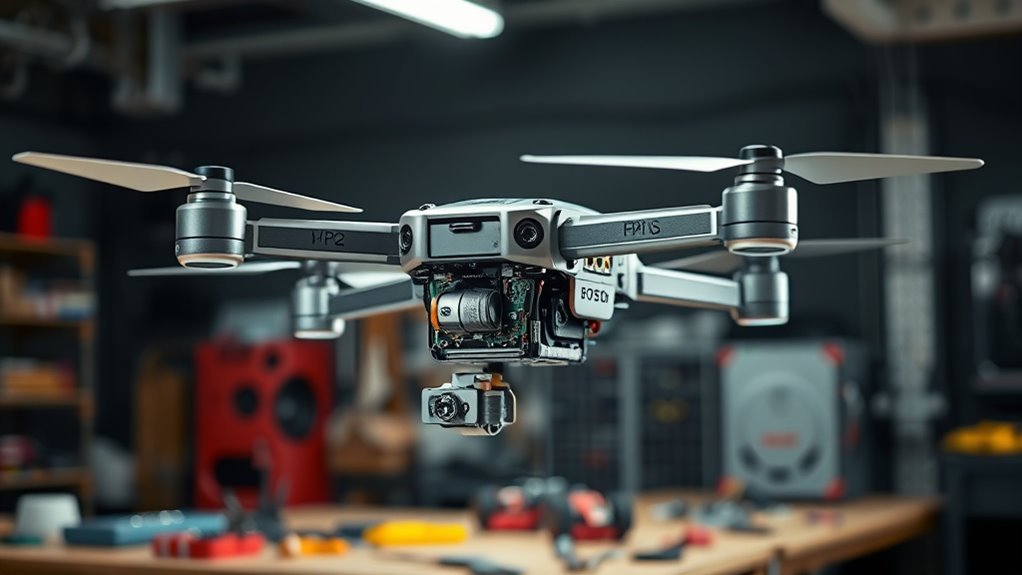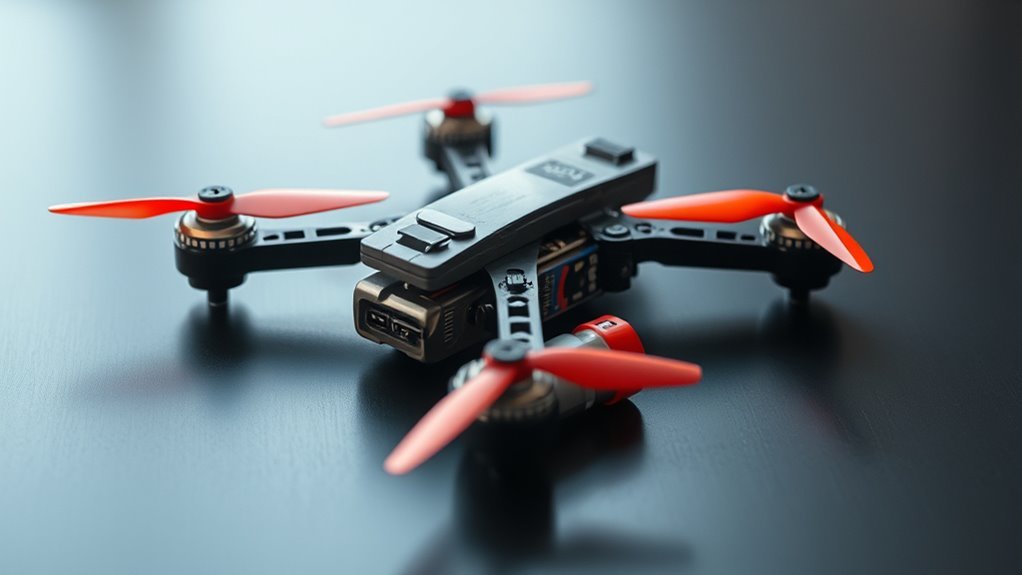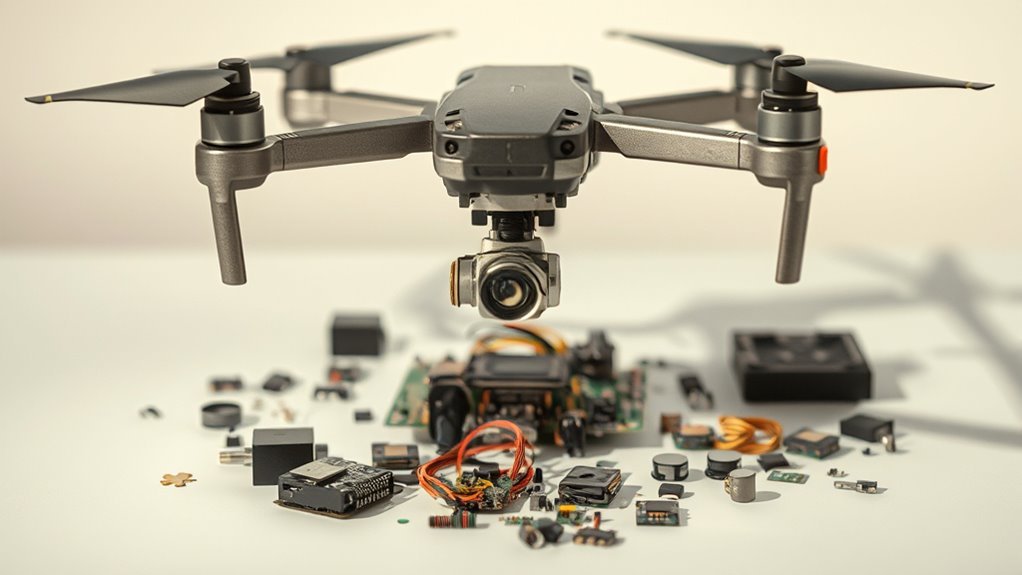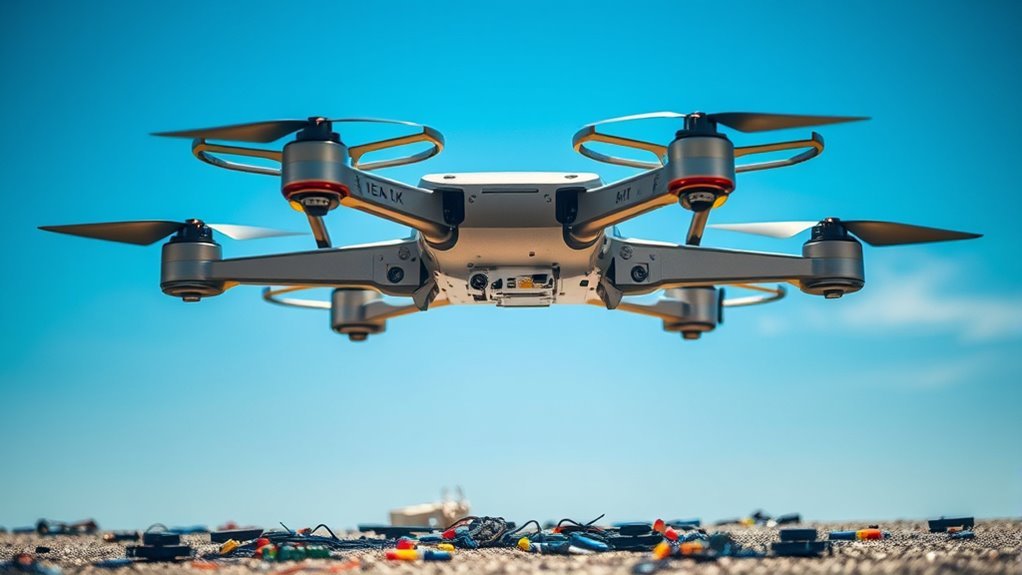Disassembly drones are specialized unmanned aerial vehicles designed for efficient dismantling of complex structures. They feature lightweight frames, advanced power systems, and precision tools for material recovery. Employing advanced sensors and algorithms, these drones navigate and assess their environment autonomously. This technology is widely applied in industries like automotive recycling and electronic waste management, enhancing sustainability. By understanding their components and operations, you can maximize their efficiency and effectiveness in various applications. More insights await you.
What Are Disassembly Drones?

Disassembly drones are specialized unmanned aerial vehicles designed to autonomously dismantle complex structures or systems, such as machinery or electronic devices. These drones leverage advanced drone technology to enhance efficiency in the disassembly process. Equipped with precision tools and sensors, they can identify materials, assess structural integrity, and execute dismantling tasks with minimal human intervention. By utilizing algorithms and AI, these drones optimize the disassembly sequence, ensuring safety and resource recovery. You’re witnessing a revolution in automation, where freedom from labor-intensive tasks allows for more creative applications of human skills. The integration of sophisticated navigation systems enables these drones to operate in challenging environments, making them invaluable assets in various industries, from manufacturing to recycling, promoting sustainable practices while minimizing waste.
Key Components of Disassembly Drones

At the core of disassembly drones lie several key components that enable their efficient operation. The frame, typically constructed from lightweight drone materials like carbon fiber or aluminum, provides structural integrity while minimizing weight. Power systems, including batteries and motors, drive the drone’s movements and tool functionalities. Sensors play an essential role in navigation and obstacle detection, enhancing safety during operation. The integration of specialized tools, such as cutters or graspers, allows for precise component disassembly, directly impacting component functions. Communication systems facilitate real-time data transfer, ensuring peak performance and user control. Together, these components create a synergistic system that maximizes efficiency, allowing you to engage in disassembly tasks with unparalleled freedom and effectiveness.
How Disassembly Drones Operate

Operating with remarkable precision, disassembly drones utilize a combination of advanced technologies to execute tasks efficiently. These drones incorporate sophisticated drone mechanics, employing sensors and algorithms to navigate complex environments. You’ll find that their operational efficiency stems from autonomous decision-making capabilities, allowing them to identify and dismantle components with minimal human intervention. Equipped with high-resolution cameras, they analyze objects for disassembly, while robotic arms equipped with specialized tools perform the necessary actions. The integration of real-time data processing guarantees they adapt to various materials and configurations, optimizing their approach. As you explore their functionality, you’ll appreciate how these drones not only enhance productivity but also provide a sense of freedom in automating intricate disassembly tasks across diverse applications.
Applications of Disassembly Drones in Various Industries
The versatility of disassembly drones extends far beyond their operational mechanics, finding applications across multiple industries that require efficient dismantling processes. In automotive recycling, these drones can swiftly disassemble vehicles, extracting valuable components for reuse or recycling. This reduces labor costs and minimizes environmental impact by enhancing material recovery rates. Similarly, in the sector of electronic waste, disassembly drones facilitate the safe breakdown of electronic devices, ensuring hazardous materials are handled responsibly while maximizing the recovery of precious metals and plastics. By employing advanced sensors and precision tools, disassembly drones streamline operations, allowing industries to adapt to the growing demand for sustainable practices. Their ability to operate in confined spaces further enhances their utility, supporting a greener future.
Tips for Maximizing Efficiency With Disassembly Drones
While employing disassembly drones can greatly enhance operational efficiency, there are several strategies you can implement to maximize their effectiveness:
- Optimize Disassembly Techniques: Utilize advanced algorithms for precise disassembly, reducing time and improving safety.
- Regular Drone Maintenance: Schedule consistent maintenance checks to guarantee drones operate at peak performance, minimizing downtime.
- Data Analysis: Monitor and analyze operational data to refine your disassembly processes, identifying areas for improvement.
- Team Training: Invest in training your team on the latest drone technologies and disassembly methods to enhance overall efficiency. Additionally, incorporating AI-powered analytics can significantly improve the precision of your operational strategies.
Frequently Asked Questions
What Regulations Govern the Use of Disassembly Drones?
When using disassembly drones, you’ll need to adhere to federal regulations and local laws. These rules guarantee safety and compliance, so you shouldn’t overlook any specific requirements in your area to avoid potential legal issues.
How Much Do Disassembly Drones Typically Cost?
“Don’t judge a book by its cover.” When considering disassembly drone pricing, costs typically range from $1,000 to $10,000, depending on features. Conducting a thorough cost comparison guarantees you find the best fit for your needs.
What Safety Measures Are Necessary When Operating Disassembly Drones?
When operating disassembly drones, you must follow strict safety protocols, ensuring proper operator training. This includes understanding risk assessment, equipment handling, and emergency procedures to maintain safety and prevent accidents in dynamic environments.
Can Disassembly Drones Be Customized for Specific Tasks?
Imagine a drone tailored just for you, gliding through intricate tasks. With task-specific modifications and seamless drone software integration, you can customize its capabilities, optimizing efficiency and precision for any challenge you face in disassembly.
What Is the Lifespan of a Disassembly Drone?
The lifespan of a disassembly drone typically ranges from five to ten years, depending on drone maintenance and technology advancements. Regular upkeep and integrating new technologies can greatly enhance durability and performance over time.

